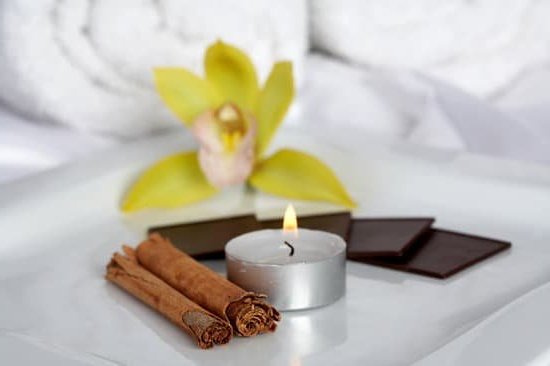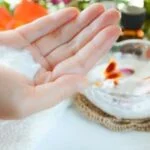Aromatherapy candles have gained immense popularity due to their calming and therapeutic benefits. What do you use to make aromatherapy candles? In recent years, people have been turning to these scented candles not just for ambiance but also for their potential to promote well-being. These candles are infused with essential oils that can help reduce stress, improve sleep quality, and enhance mood.
Aromatherapy candles work by diffusing the aromatic molecules from essential oils into the air when lit. The release of these fragrances can have a direct impact on our brain’s limbic system, responsible for emotions and memories. As a result, the scents from these candles can trigger certain reactions in our bodies, leading to relaxation or energy enhancement, depending on the essential oils used.
The benefits of aromatherapy candles extend beyond just creating a pleasant atmosphere. From stress relief to promoting better sleep patterns and even boosting mental focus, these candles offer a holistic approach to improving one’s overall well-being. By incorporating the right combination of essential oils and choosing high-quality materials like wax and wicks, you can enjoy the full benefits that aromatherapy candles have to offer.
What Are Aromatherapy Candles
Aromatherapy candles have become increasingly popular in recent years as people seek natural ways to promote relaxation, reduce stress, and improve their overall well-being. These candles are specially crafted with essential oils that release therapeutic fragrances when burned, allowing users to benefit from the aromatic properties of the oils.
Aromatherapy candles work by stimulating the olfactory system, which is linked to the part of the brain that controls emotions and memories. As a result, inhaling the scent of essential oils can have a powerful impact on mood and mental state.
To make aromatherapy candles, you will need a few key ingredients and materials. Here is a list of what you will use to make your own candles at home:
- Essential Oils: These are the core ingredients that provide the therapeutic benefits of aromatherapy candles. Each essential oil has unique properties that can help with different issues such as stress relief, insomnia, or boosting energy.
- Wax: There are several options for candle wax, including soy wax, beeswax, and paraffin wax. Soy wax is natural and vegan-friendly, while beeswax has a natural honey aroma and burns slowly. Paraffin wax is common but not as eco-friendly.
- Wicks: The wick material is crucial for a clean and efficient burn. Choose wicks made from cotton or wood that are suitable for the size of your candle.
Aromatherapy candles offer a holistic approach to well-being by combining the benefits of essential oils with the calming ambiance of candlelight. When lit, these candles create a soothing atmosphere that can help reduce anxiety, improve focus, or simply enhance relaxation after a long day. Whether you purchase them from stores or prefer to handcraft your own at home, aromatherapy candles are a delightful way to incorporate aromatherapy into your daily routine for overall wellness.
Benefits of Aromatherapy Candles
Aromatherapy candles have been gaining popularity as people are seeking natural ways to improve their overall well-being. These candles are specifically designed to release soothing scents into the air when lit, which can have a range of positive effects on the mind and body. One of the key benefits of aromatherapy candles is stress relief. The calming fragrances from essential oils like lavender, chamomile, or eucalyptus can help reduce anxiety and promote relaxation after a long day.
Another significant benefit of aromatherapy candles is improved sleep quality. Certain essential oils used in these candles, such as bergamot or jasmine, are known for their sedative properties that help induce a state of tranquility and aid in falling asleep faster. By incorporating these scents into your bedtime routine, you may experience a more restful night’s sleep and wake up feeling refreshed and rejuvenated.
Furthermore, aromatherapy candles are also valued for their mood-enhancing properties. Citrus scents like lemon or orange can uplift your spirits and boost your energy levels, while floral fragrances like rose or ylang-ylang can create a sense of calmness and happiness. Lighting an aromatherapy candle during moments of stress or low mood can help create a more positive atmosphere and improve your overall emotional well-being.
| Aromatherapy Benefit | Key Essential Oils |
|---|---|
| Stress Relief | Lavender, Chamomile, Eucalyptus |
| Improved Sleep Quality | Bergamot, Jasmine |
| Mood Enhancement | Lemon, Orange, Rose, Ylang-Ylang |
Essential Oils
Lavender essential oil is known for its calming and soothing effects on the mind and body, making it ideal for reducing stress and promoting better sleep. Eucalyptus oil is often used for respiratory support and to clear congestion, while peppermint oil is invigorating and can help with mental clarity.
Lemon oil is refreshing and uplifting, great for boosting mood and energy levels. Rosemary oil is beneficial for improving focus and concentration, making it a popular choice for workspaces or study areas.
When creating your own aromatherapy candles, it’s important to select essential oils that resonate with your personal preferences and wellness goals. Experimenting with different combinations of essential oils can lead to unique blends that cater to specific needs or moods.
By understanding the properties of each essential oil and how they interact with one another, you can create custom aromatherapy candles that provide a tailored sensory experience for relaxation, balance, or rejuvenation. So when considering what do you use to make aromatherapy candles – remember that quality essential oils are at the heart of the process.
Wax Options
Aromatherapy candles are gaining popularity due to their therapeutic benefits and soothing properties. When it comes to making these candles, one of the key decisions to consider is the type of wax you will use. The choice of wax determines not only how the candle burns but also the overall quality of the aromatherapy experience it provides.
Soy wax is a popular choice for making aromatherapy candles as it is derived from natural soybean oil, making it eco-friendly and renewable. Soy wax burns cleaner and longer, allowing for a more sustainable option compared to other waxes. Beeswax is another favored option in candle-making due to its natural aroma and air-purifying properties. It burns slowly with very little smoke, creating a warm ambiance ideal for relaxation.
On the other hand, paraffin wax is a petroleum-derived wax commonly used in candle production. While paraffin candles can be less expensive, they may release harmful toxins when burned, potentially affecting indoor air quality. As awareness of health and environmental concerns grows, many people are opting for natural alternatives like soy wax or beeswax for their aromatherapy candles.
| Wax Type | Benefits |
|---|---|
| Soy Wax | Eco-friendly, clean burn, sustainable |
| Beeswax | Natural aroma, air-purifying properties |
| Paraffin Wax | Inexpensive but may release toxins when burned |
When considering what type of wax to use for your aromatherapy candles, it’s essential to prioritize your values and preferences – whether it be sustainability, purity, or cost-effectiveness. Experimenting with different waxes can also help you determine which one best suits your needs and desired candle-making experience. By choosing the right wax for your aromatherapy candles, you can enhance not only the aesthetic appeal but also the therapeutic benefits that these candles offer.
Wick Materials
When it comes to making aromatherapy candles, selecting the right wick material is crucial in ensuring a clean and efficient burn. The wick is what allows the candle to ignite and stay lit, so its quality greatly affects the overall performance of the candle. There are various wick materials available, each suited for different types of candles and purposes.
Types of Wick Materials
Cotton wicks are the most commonly used wick material for aromatherapy candles due to their clean burning properties. They come in various sizes and styles, such as square or flat braided, which can impact how the candle burns.
Wooden wicks have gained popularity for their crackling sound reminiscent of a fireplace, adding an extra sensory element to the candle experience. Additionally, there are also eco-friendly options like hemp or organic cotton wicks for those looking to minimize their environmental impact.
Choosing the Right Wick Material
The size and type of container used for your aromatherapy candle will play a role in determining the appropriate wick material. A larger diameter container may require a thicker wick to ensure an even burn throughout the candle’s lifespan.
It’s essential to consider factors such as fragrance load, wax type, and desired burn time when selecting a wick to achieve the best results. Experimenting with different wick materials can help you find the perfect match for your specific candle-making needs and preferences.
Troubleshooting Wick Issues
In some cases, improper wick selection could lead to issues like tunneling (when only the center of the candle melts), mushrooming (carbon buildup at the top of the wick), or uneven burning. If you encounter these problems, it may be necessary to try a different wick material or size until you achieve optimal performance. Properly trimming and maintaining your wick before each use can also prevent these issues from occurring, ensuring a longer-lasting and more enjoyable aromatherapy candle experience.
Coloring and Fragrance
When making aromatherapy candles, one of the key components to consider is the coloring and fragrance. Adding natural coloring and high-quality fragrance oils not only enhances the visual appeal of the candle but also amplifies its aromatherapy benefits. Here are some tips on how to effectively incorporate these elements into your candles:
- Choose natural coloring options: Opt for natural coloring agents like mica powder, dried herbs, or botanical extracts to add color to your candles. These ingredients not only provide a visually appealing hue but also complement the therapeutic properties of the essential oils used in the candle.
- Experiment with fragrance oils: When selecting fragrance oils for your aromatherapy candles, ensure that they are of high quality and made from natural ingredients. Essential oils such as lavender, peppermint, or eucalyptus can help promote relaxation, focus, or relieve stress when diffused in the air.
- Balance the ratio: It’s crucial to strike a balance between the amount of coloring and fragrance oils added to your candle wax. Too much fragrance oil can overpower the scent and cause irritation, while excessive coloring may affect the burning process of the candle.
By incorporating natural coloring and premium fragrance oils into your aromatherapy candles, you not only create a visually appealing product but also enhance its therapeutic benefits. Experimenting with different combinations of colors and scents can help you tailor your candles to suit specific moods or intentions. Remember that less is sometimes more when it comes to adding these elements – a delicate touch can go a long way in creating a harmonious sensory experience for users.
Ultimately, what you use to make aromatherapy candles plays a significant role in determining their effectiveness and appeal. By paying attention to details such as coloring options and fragrance oils, you can elevate your candle-making process and create products that not only look beautiful but also offer holistic well-being benefits through aromatherapy. Experiment with different variations until you find the perfect combination that resonates with both your aesthetic preferences and desired therapeutic outcomes.
DIY Candle Making Process
Aromatherapy candles are becoming increasingly popular due to their calming and therapeutic benefits. Making your own aromatherapy candles can be a fulfilling and creative activity that also allows you to customize the scents to suit your preferences. In this section, we will provide you with a step-by-step guide on how to make your own aromatherapy candles at home using essential oils, wax, wicks, and other materials.
Gather Your Materials
Before you begin making your aromatherapy candles, make sure you have all the necessary materials on hand. You will need essential oils of your choice, wax (such as soy wax or beeswax), wicks, a double boiler or microwave-safe container for melting the wax, a thermometer, a stirring utensil, and candle containers. You can also add coloring agents for aesthetics if desired.
Melting the Wax
Start by melting the wax in a double boiler or microwave-safe container following the manufacturer’s instructions. It is important to monitor the temperature of the melted wax using a thermometer to ensure it does not overheat. Overheating can affect the quality of the scent and the candle’s overall burn time. Once the wax is melted, remove it from heat and allow it to cool slightly before adding essential oils.
Add Essential Oils and Pouring
Once the wax has cooled slightly but is still liquid, add your chosen essential oils for fragrance. Be mindful of how much oil you add based on personal preference and recommended usage guidelines to avoid overpowering scents. Stir gently to mix in the oils evenly.
Then carefully pour the scented wax into your candle containers. Place wicks in each container and secure them in place while the wax solidifies. Allow sufficient time for your candles to cool and harden before trimming the wicks and enjoying them during your next relaxation session.
Safety Tips
In conclusion, the growing trend of aromatherapy candles is not just a passing fad but a reflection of people’s increasing awareness of the benefits they provide. From stress relief to improved sleep and mood enhancement, these candles have become an essential part of self-care routines for many individuals seeking holistic well-being. Understanding what do you use to make aromatherapy candles involves essential oils, wax options, wick materials, coloring, and fragrance choices.
When it comes to making aromatherapy candles at home, selecting the right materials is crucial. Essential oils such as lavender, eucalyptus, and chamomile offer different therapeutic properties that cater to various needs. Choosing the appropriate wax like soy wax or beeswax ensures a clean burn without harmful toxins. The type of wick material used also plays a significant role in how efficiently the candle burns.
Additionally, safety precautions must always be prioritized when making and using aromatherapy candles. Ensuring proper ventilation while melting wax, handling hot liquids with care, and keeping flammable materials away are vital steps to prevent accidents. By following these safety tips and incorporating high-quality ingredients into your DIY candle-making process, you can enjoy the soothing benefits of aromatherapy candles in a safe and relaxing manner for a truly fulfilling experience.
Frequently Asked Questions
How Do You Make Aromatherapy Candles?
Making aromatherapy candles involves melting wax, adding fragrance oils or essential oils, and pouring the mixture into candle containers with wicks. The process also includes choosing the right wick size, selecting a suitable container, and allowing the candles to cool and set.
What Are Aromatherapy Candles Made Of?
Aromatherapy candles are typically made of natural ingredients like soy wax, beeswax, or coconut wax. These waxes are preferred because they burn cleanly and do not release harmful toxins when melted. Essential oils or fragrance oils are added to provide therapeutic benefits and pleasant scents.
How Do You Mix Essential Oils for Candles?
Mixing essential oils for candles requires careful consideration of the aroma profiles of each oil. Typically, a combination of top, middle, and base notes is used to create a balanced scent.
Essential oils should be measured precisely to avoid overpowering fragrances or causing skin irritations when burned. Experimenting with different oil blends can help achieve the desired therapeutic effects in aromatherapy candles.

Are you looking for a natural way to improve your health and wellbeing?
If so, aromatherapy may be the answer for you.





